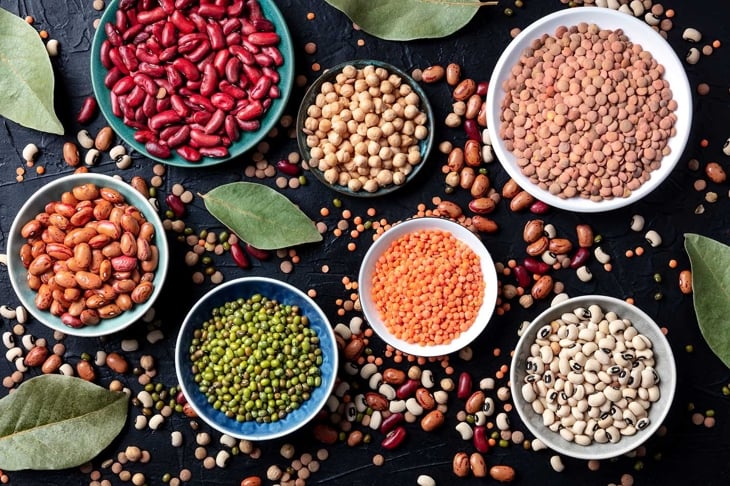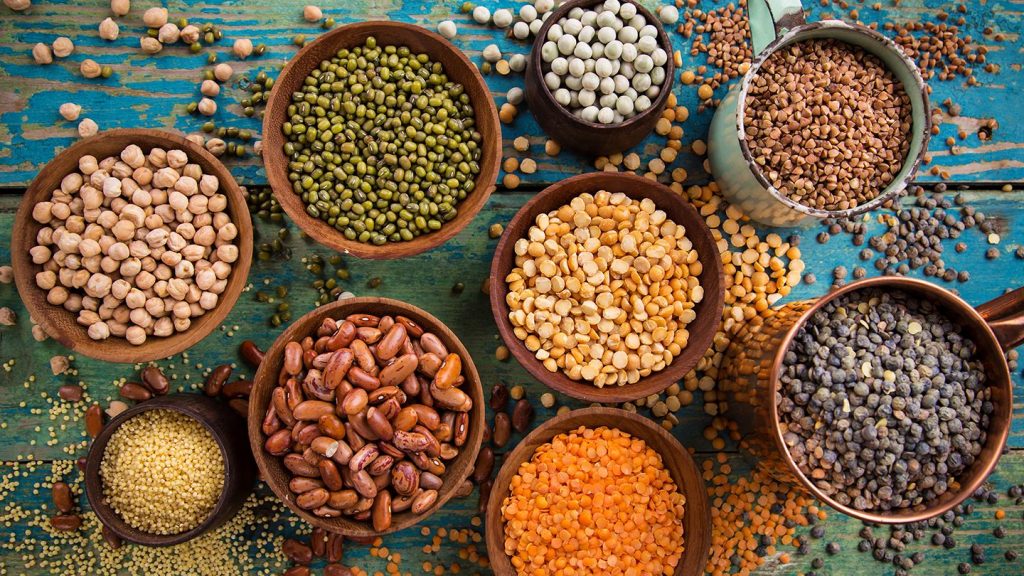Let’s recognise the value of pulses in our diets on February 10—World Pulses Day—and establish the daily practise of consuming pulses to maintain good health.
Here are 10 reasons to include more beans, lentils, and other pulses in your day.
GENEROUS TO FARMERS
2016 was designated as the International Year of Pulses by the Food and Agriculture Organization of the United Nations because they are “nutritious seeds for a sustainable future.” The incredible nutritious value of pulses was underlined, but they were also highlighted since their production “helps farmers preserve home security, promoting economic stability.” With a juxtaposition of colours that makes it a visually appealing dish for all ages, this recipe for Roasted Veggies and Lentils with Crisped Kale and Creamy Vegan Mayo brings the farm love right to your plate.
EASY ON THE WALLET
Pulses are inexpensive to buy, especially in large quantities, and simple to store. Additionally, they offer great value because they make any food much more filling while also having positive effects on the environment and nutrition. This recipe of Black “Caviar” Lentils Tumbled Over Creamy Yogurt with Mint combines warm black lentils with cool creamy yoghurt for an appealing visual contrast that tastes great as an appetiser or as a side to chicken or shellfish.
KIND TO THE ENVIRONMENT
Pulses are not only good for you, but also good for the environment. Pulses can help promote soil biodiversity and climate change mitigation by reducing the need for synthetic fertilizers. As they grow, pulses produce compounds that feed diverse soil microbes that, in turn, benefit soil health, crowding out disease-causing bacteria and fungi and creating healthy soil for other crops in rotation. In addition, pulses can grow in semi-arid conditions and tolerate drought stress.

NUTRITION POWERHOUSES
The world is giving more attention to the benefits of plant-based diet choices, and pulses are the hip and darling foods of our day—and they’re here to stay. Not only are pulses the stars in delicious plant-based recipes, but they’re also trending their way into mainstream plant-based faux meat products.
MANY DIFFERENT CHOICES
The dry beans, peas, lentils, and chickpeas are the pulses that are most well-known and frequently eaten. Some people are unsure about exactly what is meant by the term “pulse” in their imaginations. Are those lentils? Are they legumes? Is it either a bean or a pea? Legume refers to the entire plant, including the leaves, stems, and pods, whereas “pulse” refers to the edible seed found inside the legume plant.
HIGH IN PROTEIN
Eating pulses is a super way to increase plant protein in your diet. If you’re not used to eating pulses, start with smaller portions to minimize possible bloating and gas. As your body adjusts, the side effects will dissipate. You can also de-gas pulses by making sure they are rinsed well before cooking, soaking dried beans well and long, sprouting lentils to improve digestion, and cooking beans until very soft.
GOOD CARB FUEL
Typically, eating a lot of carbohydrates raises your blood sugar levels, however not all carbohydrate fuel is unhealthy. Pulses, which are high in fibre, protein, and vitamins, give something entirely different in that they deliver slow-release energy throughout digestion, which helps to regulate blood sugar levels. One of the greatest methods to control blood glucose and, as a bonus, lower blood cholesterol is to replace other starchy foods in your diet with pulses if you have diabetes or are at risk for developing it.

FLEXIBLY SNACKABLE
If you’re looking for a nutritious snack that can be used eaten in many different forms, it’s time to reach for the pulses. This Red Lentil Dip is a perfect example: a smooth dip that also doubles as a sandwich spread. Full of flavor, colorful, and creamy, it’s the quintessential dip for any occasion. Red Lentil Dip is also excellent spread on a tortilla wrap and loaded up with veggies. Or pipe into Belgian endive leaves and serve as an appetizer.
WARMING DISHES
Pulses are best when cooked for a long time, making them ideal for adding to soups and stews. On a chilly night, pulses can serve as the filling centre of a hearty vegetarian bowl and add colour, texture, and interest. If you need some ideas, try this warming Moroccan turkey stew, which has a spicy touch from the cayenne that is concealed in the spice blend. As an alternative, you might warm up with this simple to prepare Smoky Fire-Roasted Tomato and Bean Soup.
THE STAR OF KITCHARI
A staple of Ayurveda, kitchari is very beneficial for digestion. Lentils, split peas, moong dal, and many other types of pulses are used to make kitchari. In order to increase the nutritional value of roasted vegetables, kitchari can also be used as a basis. Split peas and rice are added to our Healing Kitchari Bowls to make them even more digestible. It’s a purifying, life-giving meal in a bowl when combined with spices, ginger, and greens.

